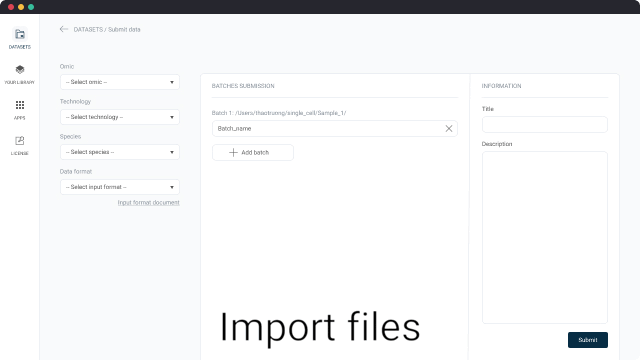Spatially resolved multiomics of human cardiac niches
Kazumasa Kanemaru, James Cranley, Daniele Muraro, Antonio M. A. Miranda, Siew Yen Ho, Anna Wilbrey-Clark, Jan Patrick Pett, Krzysztof Polanski, Laura Richardson, Monika Litvinukova, Natsuhiko Kumasaka, Yue Qin, Zuzanna Jablonska, Claudia I. Semprich, Lukas Mach, Monika Dabrowska, Nathan Richoz, Liam Bolt, Lira Mamanova, Rakeshlal Kapuge, Sam N. Barnett, Shani Perera, Carlos Talavera-López, Ilaria Mulas, Krishnaa T. Mahbubani, Liz Tuck, Lu Wang, Margaret M. Huang, Martin Prete, Sophie Pritchard, John Dark, Kourosh Saeb-Parsy, Minal Patel, Menna R. Clatworthy, Norbert Hübner, Rasheda A. Chowdhury, Michela Noseda, Sarah A. Teichmann
Abstract
The function of a cell is defined by its intrinsic characteristics and its niche: the tissue microenvironment in which it dwells. Here we combine single-cell and spatial transcriptomics data to discover cellular niches within eight regions of the human heart. We map cells to microanatomical locations and integrate knowledge-based and unsupervised structural annotations. We also profile the cells of the human cardiac conduction system1. The results revealed their distinctive repertoire of ion channels, G-protein-coupled receptors (GPCRs) and regulatory networks, and implicated FOXP2 in the pacemaker phenotype. We show that the sinoatrial node is compartmentalized, with a core of pacemaker cells, fibroblasts and glial cells supporting glutamatergic signalling. Using a custom CellPhoneDB.org module, we identify trans-synaptic pacemaker cell interactions with glia. We introduce a druggable target prediction tool, drug2cell, which leverages single-cell profiles and drug–target interactions to provide mechanistic insights into the chronotropic effects of drugs, including GLP-1 analogues. In the epicardium, we show enrichment of both IgG+ and IgA+ plasma cells forming immune niches that may contribute to infection defence. Overall, we provide new clarity to cardiac electro-anatomy and immunology, and our suite of computational approaches can be applied to other tissues and organs.
Datasets
1. Combined single cell and single nuclei RNA-Seq data - Heart Global

Analyze this study
Source data
https://cellxgene.cziscience.com/collections/3116d060-0a8e-4767-99bb-e866badea1ed
Alias names
E-MTAB-12916, PMID37438528, PMC10371870
Cite this study
Kanemaru, K., Cranley, J., Muraro, D., Miranda, A.M., Ho, S.Y., Wilbrey-Clark, A., Patrick Pett, J., Polanski, K., Richardson, L., Litvinukova, M. and Kumasaka, N., 2023. Spatially resolved multiomics of human cardiac niches. Nature, 619(7971), pp.801-810. https://doi.org/10.1038/s41586-023-06311-1
